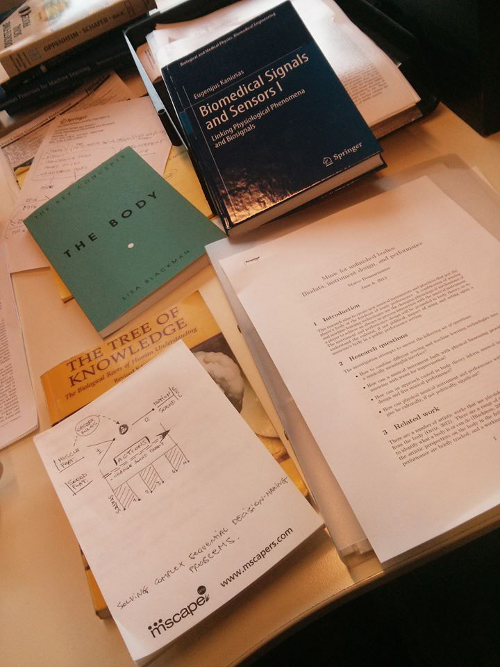Archive for July, 2013
Intro to the politics of physical musical performance
This picture pretty much sums it all up. Given the interest of motion-gesture researchers in using mostly cognitive science to understand sound-making motion, there is room to explore a politically engaged perspective that straight-forwardly address the (player’s) body.
The body is a political entity and body-based music performance produces political messages. A body is political for it touches the aspirations and the “open wounds” of everyone’s cultural and emotional background. Think not only of gender, identity, self-acceptance, who I am, who I want to be, who I pretend I am, but also everyday life as a part of a larger society of bodies. We are bodies that interact with and affect other bodies countless times a day, and together we put forth our world. What a body can do? What multiple bodies can do? How our bodies are modified by the instruments we use? and how this comes down to the design of new musical instruments?
The politics of physical musical performance might not be as evident as for performance art, yet, it is enacted with or without the player will. This is valid for the overall practice of music performance, and is particularly true when it comes to works that augment the body with technology. The question is: How can we make the design of physical musical instrument and performance with (bio)technologies politically significant?
An interesting perspective is forming by drawing upon the notions below. The summer will be the time for me to write a related literature review and thus combine this knowledge into an original form.
effort, a body whose physicality defines and mediates with the musical instrument (Ryan, 1991);
emergence, a body always in process (Massumi, 2002);
enactment, a body that brings forth a world by knowing (Maturana and Varela, 1992);
biomediation, a body reconfigured by media practices that condition its biology (Thacker, 2003).
References:
Maturana, H.R., and Varela, F. J. 1992, The tree of knowledge. Shambala.
Massumi, B. 2002. Parables of the virtual: Movement, affect, sensation. Durham N.C: Duke University Press.
Ryan, J. 1991. Some remarks on musical instrument design at STEIM. Contemporary Music Review, 6(1):3-17.
Thacker, E. 2003. What is Biomedia? Configurations, 11(1):47-49.


